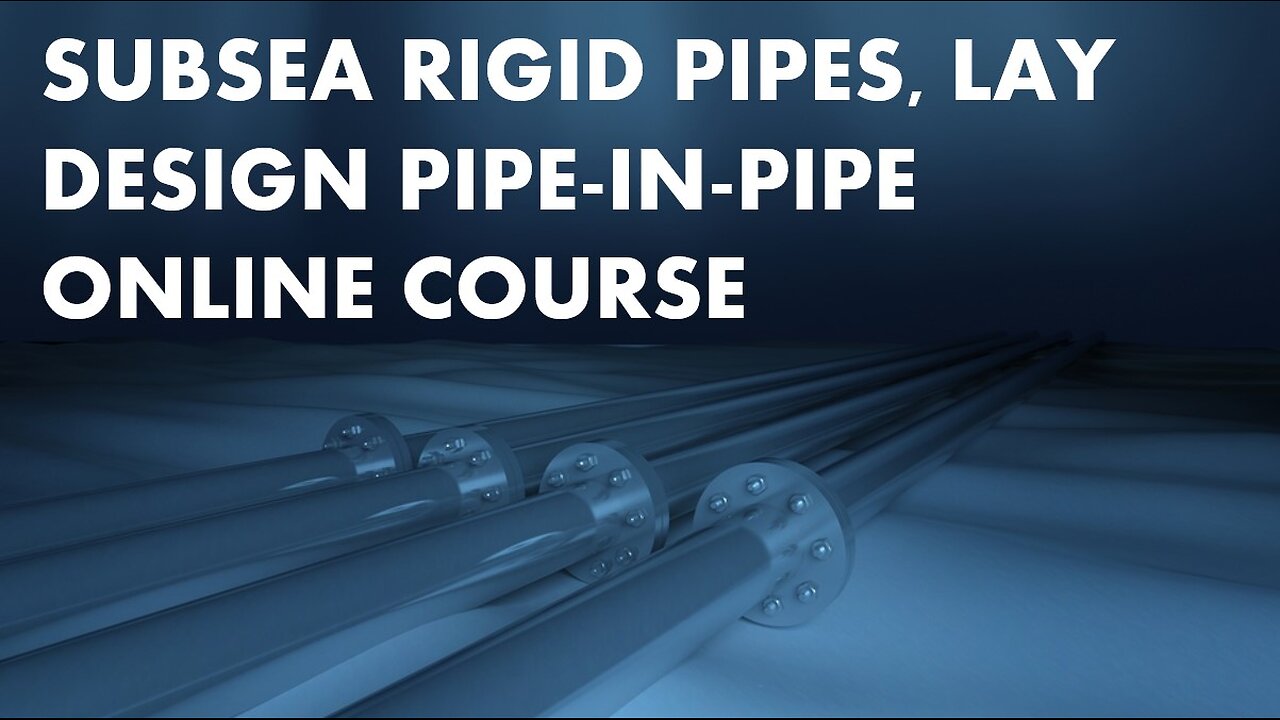Premium Only Content

Subsea Rigid pipes, Lay Design Pipe in Pipe Online Course
Rigid pipelines are a fundamental component of subsea architecture, forming the subsea highway that transport oilfield fluids between the wellhead to the processing facility. Rigid pipelines are made from carbon steel, corrosion resistant alloys or hybrid construction with a carbon steel parent pipe and internal corrosion resistant cladding or lining.
Rigid pipelines range from small diameter 4-inch pipes for oilfield service fluids, to 18-inch infield lines, to larger diameter export trunk lines connecting offshore processing facilities to onshore receiving facilities.
The increasing amount of High-Pressure High Temperature (HP/HT) reservoir, challenge oil and gas industry practitioner to maintain the flowlines temperature. One method to tackle this problem is adding thermal insulation layer to pipeline. Furthermore, engineer found a good method to apply thermal insulation to the pipeline called Pipe in Pipe.
As it’s named, Pipe in Pipe (PIP) basically consist of rigid inner pipe and rigid outer pipe (also known as carrier pipe). Inner pipe is the main pipe that located inside the outer pipe and the function of this pipe is as hydrocarbon exposed media to transfer it. On the other hand, outer pipe is the part of the PIP system that exposed to environment.
Consequently, this part need corrosion coating or sacrificial anode to prevent itself from corrosion threat.
Between outer pipe and inner pipe usually insulation material is applied. Beside insulation layer, there is also air gap between these two pipe acts as additional thermal insulation and consider as dry insulation, which better than wet insulation.
For full videos you can visit this link :
https://drive.google.com/file/d/1g3a6_2clfjUZV3G89D5Nt0y7E5tgVPZt/view?usp=sharing
and you will be directed to a google drive link where you can download all files of this course
https://drive.google.com/file/d/18gVEskW8ucfAEYWE35iWwr_2Q9Fy9F8N/view?usp=drive_link
-
 1:30:48
1:30:48
Josh Pate's College Football Show
14 hours ago $7.58 earnedCFP Reaction Special | Early Quarterfinal Thoughts | Transfer Portal Intel | Fixing The Playoff
65.7K -
 23:55
23:55
CartierFamily
3 days agoElon & Vivek TRIGGER Congress as DOGE SHUTS DOWN Government
125K152 -
 5:43:44
5:43:44
Scammer Payback
2 days agoCalling Scammers Live
206K28 -
 18:38
18:38
VSiNLive
2 days agoProfessional Gambler Steve Fezzik LOVES this UNDERVALUED Point Spread!
150K20 -
 LIVE
LIVE
Right Side Broadcasting Network
10 days agoLIVE REPLAY: President Donald J. Trump Keynotes TPUSA’s AmFest 2024 Conference - 12/22/24
2,514 watching -
 4:31
4:31
CoachTY
1 day ago $28.72 earnedCOINBASE AND DESCI !!!!
190K13 -
 10:02
10:02
MichaelBisping
1 day agoBISPING: "Was FURY ROBBED?!" | Oleksandr Usyk vs Tyson Fury 2 INSTANT REACTION
113K16 -
 8:08
8:08
Guns & Gadgets 2nd Amendment News
2 days ago16 States Join Forces To Sue Firearm Manufacturers Out of Business - 1st Target = GLOCK
130K93 -
 10:17
10:17
Dermatologist Dr. Dustin Portela
2 days ago $19.43 earnedOlay Cleansing Melts: Dermatologist's Honest Review
164K17 -
 1:02:20
1:02:20
Trumpet Daily
2 days ago $51.93 earnedObama’s Fake World Comes Crashing Down - Trumpet Daily | Dec. 20, 2024
119K86